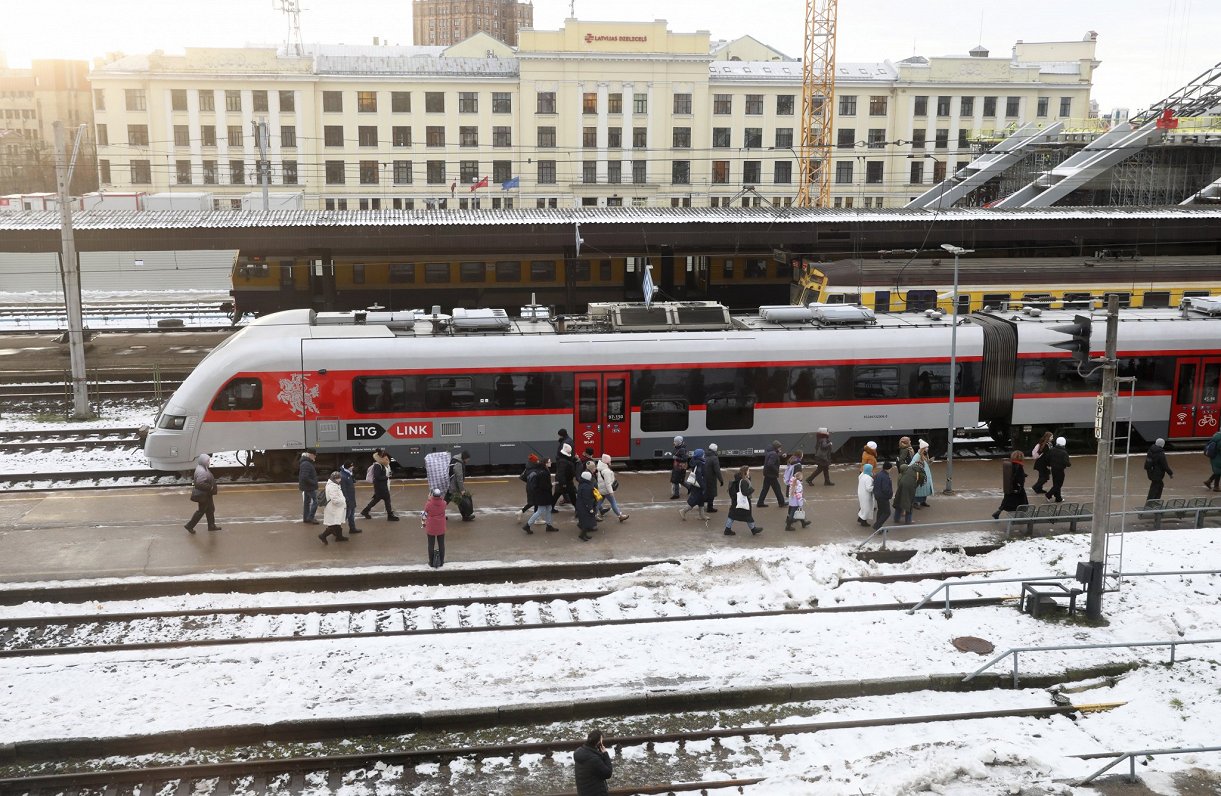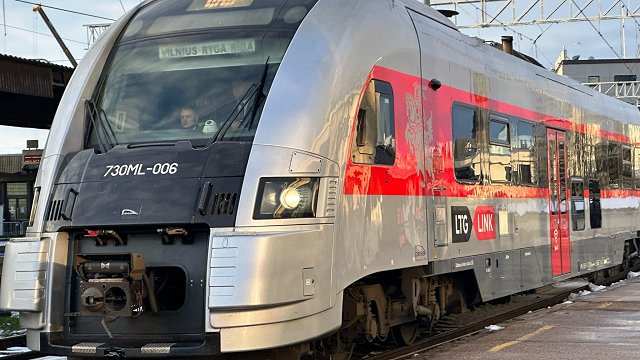The train route is provided by Lithuanian railway company LTG Link, which said in a written reply to Latvian Radio that the popularity of this daily route is increasing, and more than 20,000 tickets have been sold in four months.
"If you look at the end of December, there were a lot of Lithuanian tourists in Riga to celebrate the New Year. The total increase in December was about 10% compared to the same period last year," said Ieva Lasmane, Head of the Rīga Investment and Tourism Agency's Tourism Department. In January, the number of Lithuanian tourists grew even faster - by 30%.
LTG Link, the Lithuanian railway company, said that ticketing data show that at least half of passengers stay overnight in Riga or Vilnius. Hotels are therefore the biggest beneficiaries. Ēriks Lingebērziņš, head of the Association of Travel Agents and Tour Operators, said that the number of Lithuanians served by hotels increased by 2,000 in February:
"This means that the train is also contributing, but we cannot see that the existence of the train is creating a huge travel wave. 2,000 is good because for us, any 1,000 tourists is great news. I think it has created some interest in coming to Rīga differently."
The summer months, which are usually the busy tourist season, will give the true picture of whether the blood of the tourism industry in Rīga will start to run faster with the opening of the train route.
"We need tourists to stay at least one night because otherwise, the economic contribution will be small, a souvenir will be bought, lunch will be eaten, but this will not go along with the main goal of our tourism industry - we need to increase average tourist spending in Latvia," said Lingebērziņš.
Andris Kalniņš, President of the Latvian Hotels and Restaurants Association, is optimistic about the summer season and predicted that there will be more and more guests from Lithuania in Rīga: "Because it's easier than going by car. It's a direct connection. I think the influx will be bigger and the trains will be full."
Asked whether the hospitality industry has already seen a positive contribution in the four months since the regular train service from Vilnius to Riga and back, Kalnins answered in the affirmative: "Yes, there was an influx of Lithuanian tourists, especially in Rīga, when this service started. And you also have to understand that Lithuania is the number one country for us, where most foreign tourists come to Latvia from. So the train is just adding to the statistics. In any case, whether it is caterers or accommodation, the money stays in the Latvian economy. It is an export of a service, and in any case, it is good that they are here and coming."
Kalniņš pointed out that the Old Town is quiet at the moment and an increase in tourism is very important:
"Unfortunately, if we look at Old Town, it is dying. Many shop windows are boarded up and there are signs saying they are up for rent. If there is this flow of foreign tourists and more Lithuanians come here, then entrepreneurs will realize that it is profitable to open their businesses and renovate everything. We will work on that."
The Lithuanian railway company LTG Link told Latvian Radio that the majority of passengers traveling to Riga come from Vilnius - about 63%. The international route is popular with families and young people - around 10% of passengers are children and students.
































